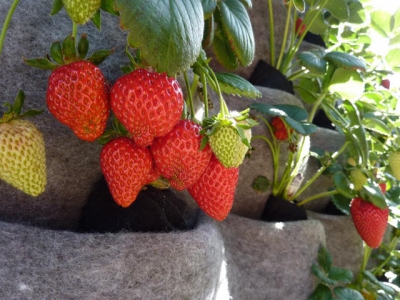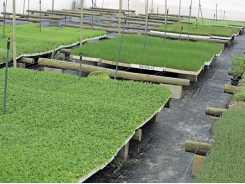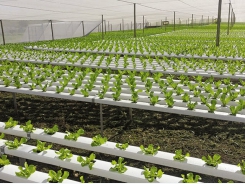Growing Strawberry Plants – How to Grow Strawberry Wall

Growing Strawberries on a Strawberry Wall
If you want something different try a strawberry wall. This is a very efficient way of growing strawberries, particularly in a small garden. There are several variations but I think the most effective one are a hollow wall about 4 ft wide at the base with the sides sloping inwards at the rate of about 4 inches in every lift, filled with soil and narrowing to about 18 inches at the top.
The origin of the strawberry wall goes back beyond the introduction of the Virginian Red and the Pines from which all our modern strawberries descend. Before this it was only the wild strawberry which was available and gardeners used to go out into the woods to search for the best plants and, as with alpine strawberries, seeds used to be sown and plants raised from the best berries.
The best way is to run a wall east to west so that you can have early fruits on the southern side and much later on the cooler northern side. Fruits from a strawberry wall on the southern side can be picked some ten to fourteen days earlier than those grown on the ground.
A variation is to make strawberry steps and this is a very useful way of utilising some of these horrible clay banks which are left by builders after they have levelled off a site for a house on a slope. The steps are just small terraces, such as you can see in the hilly districts where you spend your Mediterranean or island holidays. The size will depend entirely on the materials you have available or can procure. In fact, you could make a pyramid instead of a wall if you wish.
A typical strawberry wall in a large garden would perhaps be 20 ft long with the outer measurements 6 ft wide at the base tapering up to 2 ft at the top, and about 4 1/2 ft high. Any size can be made as long as the proportions are the same. Hollow concrete blocks which are used for insulating or dividing walls are ideal as these can also be filled with soil. Start off as you would build any hollow wall by taking out a trench some 4 inches deep and putting the first row of stones in, then infill with soil putting about 2 to 3 inches extra on top of the stones. This levels them but also allows the plants to root.
The soil used should be rich, containing plenty of organic material such as well-rotted manure and compost or the same mixture as you would use for tomatoes and chrysanthemums. This has to last anything up to ten years, so incorporate bonemeal which will provide a steady supply of phosphates. As the work proceeds, vertical pipes of various lengths about 2 inches in diameter can be inserted so that during dry weather watering will be sure to reach all levels. Plant the young strawberries as you go along, then put on the next layer of stones some 4 inches in from the lower row, fill up with soil and continue in this fashion until you get as high as you wish to go.
The alternative method of planting is simply to plant in the soil at the top of the wall and allow the strawberry runners to root as they hang down. This is the reverse of the so-called climbing strawberry. Watering and feeding is done at the top and growing the strawberries in holes in barrels is a variation of this.
It is best to plant rooted strawberry runners in September. There are some very good English varieties available and an abundance of continental varieties which lend themselves extremely well to this technique.
Có thể bạn quan tâm
Phần mềm

Phối trộn thức ăn chăn nuôi

Pha dung dịch thủy canh

Định mức cho tôm ăn

Phối trộn phân bón NPK

Xác định tỷ lệ tôm sống

Chuyển đổi đơn vị phân bón

Xác định công suất sục khí

Chuyển đổi đơn vị tôm

Tính diện tích nhà kính

Tính thể tích ao hồ




 Capsicum diseases
Capsicum diseases  Greenhouse production in SA – learning from Europe
Greenhouse production in SA – learning from Europe